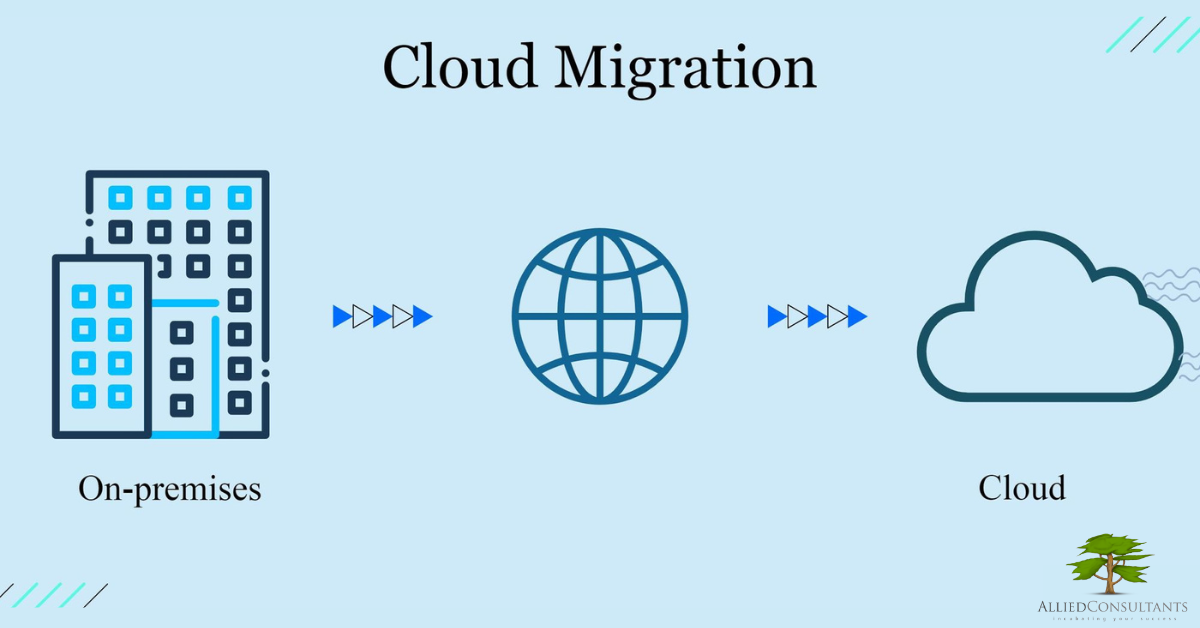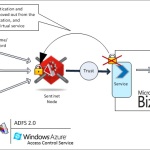Why Is Cloud Migration Crucial For Your Business Success
Cloud technology adoption has revolutionized the business landscape, presenting unprecedented advantages in scalability, flexibility, security, and collaboration. This blog delves into the reasons why businesses should make cloud migration a top priority for their success in 2023 and beyond. We will explore the cost-efficiency and data protection benefits, revealing how cloud migration can transform your business, fostering growth and enhancing competitiveness. Join us on this enlightening journey as we unveil the game-changing potential of cloud migration.
1. Flexibility
When discussing the advantages of cloud-based systems, flexibility stands out as the foremost benefit. Cloud services are ideal for businesses with varying bandwidth requirements, as they can tailor their services accordingly. With cloud capacity, scaling up or down becomes effortless, thanks to the utilization of remote servers. This heightened agility gives organizations a competitive edge, making “operational agility” one of the primary motivations for adopting cloud solutions.
2. Improved Cost Efficiency
Cloud migration offers considerable cost savings in comparison to traditional on-premises infrastructure. By transitioning your business operations to the cloud, you eliminate the need for substantial upfront investments in hardware, maintenance expenses, and the overhead associated with managing physical servers. Cloud service providers operate on a pay-as-you-go model, enabling you to pay only for the resources you actually use.
Furthermore, cloud platforms offer automated tools for infrastructure management and optimization, further reducing operational costs. These cost efficiencies empower businesses of all sizes to allocate resources more effectively and invest in core areas of growth.
3. Disaster Recovery
Investing in a robust disaster recovery system is essential for organizations of all sizes. However, limited capital and knowledge often result in this vital reinforcement being overlooked until a disaster strikes. The emergence of cloud technology has made organizations recognize the benefits of a reliable disaster recovery system. Adopting a cloud-based backup and recovery solution offers both time and cost savings by eliminating the need for significant upfront investments and unnecessary reliance on third-party expertise.
Beyond everything else, it ensures the safety and security of information and data. The true value of this capability becomes evident during incidents, as disaster recovery prepares organizations to comply with various standards that are being put in place.
Also Read This: Four Phases To Developing The Ideal Mobile Apps
4. Enhanced Security & Data Protection
In today’s digital age, ensuring data security is of utmost importance for businesses. Cloud service providers prioritize the implementation of robust security measures to safeguard your business data and maintain regulatory compliance. Leading cloud platforms utilize advanced encryption techniques, and intrusion detection systems, and conduct regular security audits to protect your information. Additionally, cloud providers offer reliable backup and disaster recovery solutions, minimizing the risk of data loss and downtime. By migrating to the cloud, businesses gain access to enterprise-grade security infrastructure, expertise, and round-the-clock monitoring, enhancing their overall cybersecurity posture.
Preparation Steps To A Successful Cloud Migration
When executed effectively, a cloud migration can establish a future-proof foundation for your organization, delivering optimal performance, cost-efficiency, and scalability for your IT infrastructure. However, without a well-defined plan, you may encounter unfavorable outcomes, especially regarding migration and ongoing costs.
Here are five steps to ensure the success of your cloud migration journey.
1. Choose A Designated Migration Manager
To ensure the success of your cloud migration journey, it is crucial to appoint a dedicated project manager who will lead the Cloud Center of Excellence. This individual will assume internal responsibility for the migration process. While it may seem obvious, many businesses make the mistake of having multiple decision-makers share the role, which can lead to inefficiencies. Depending on the amount and sensitivity of data, numerous stakeholders may need to approve each process, causing project delays.
Department heads can provide input in the initial stages and receive rationales later. By not designating a lead manager from the outset, teams may work without coordination, hindering the migration progress. The longer you rely on a committee model, the higher the costs and negative impact on bandwidth.
2. Plan Out Your Account Structure
The second crucial step is to plan the account structure, security, and governance at a high level. It is essential to avoid consolidating everything into a single account, but instead, develop a governance plan that includes all applications, workloads, resources, and users. To achieve this, clear migration Key Performance Indicators (KPIs) need to be established.
Certain requirements, such as availability and latency, may already be predetermined. Additionally, it is important to consider end-user needs and the specific usage nuances of applications or data. It is crucial not to assume that a cloud migration will automatically yield better results than on-premise hosting. While it is often possible, it can only be achieved through proper planning.
3. Determine What Type Of Migration Is Best
Once you have determined your requirements and KPIs, the next step is to select the appropriate cloud migration strategy from the “6 R’s”:
- Re-host: Migrate your application and data as-is, also known as “lift and shift.”
- Re-platform: Redesign certain elements to leverage cloud capabilities, such as horizontal scaling.
- Refactor: Completely re-architect your application to be cloud-first.
- Retain: Keep some elements on-premise, which is beneficial for longer migrations or compliance purposes.
- Retire: Do not migrate unneeded functionalities, allowing them to reach end-of-life.
- Repurchase: Replace certain functionalities with third-party cloud options.
Each strategy is suitable for different use cases, so it is important not to default to “lift and shift” simply because it is the quickest option. For instance, software-as-a-service companies should plan the migration of their DevOps processes, which may require modifications to operate effectively on the cloud. Choosing minimal architectural changes may result in not fully capitalizing on the benefits of the cloud, potentially leading to heavier workloads and operational challenges in the future.
4. Choose A Cloud Provider
The fourth crucial step involves making a critical decision: determining whether a public or private cloud best suits your needs.
Public clouds offer advantages such as lower costs, unlimited scalability, and minimal maintenance requirements. By leveraging a third-party provider like Amazon Web Services or Microsoft Azure, you can benefit from their shared resources and expertise in cloud infrastructure.
On the other hand, private clouds are exclusively dedicated to your company, whether you build the infrastructure internally or partner with a third party. Depending on the sensitivity of your data, a private cloud may offer greater customization and enhanced protection against security issues.
Additionally, there is the option of hybrid cloud computing, which combines elements of both public and private clouds, providing a flexible solution that can meet specific requirements and optimize resource utilization.
Conclusion
Cloud migration has become an important element of a successful business strategy. The benefits of the cloud, including enhanced scalability, flexibility, cost efficiency, security, collaboration, and disaster recovery, are imperative to consider. Embracing cloud technology enables businesses to maintain agility, drive rapid innovation, and adapt to evolving market dynamics. By leveraging the capabilities of the cloud, businesses can optimize their operations, enhance productivity, and deliver exceptional customer experiences. In order to thrive in today’s digital landscape, it is crucial for businesses to embark on a cloud migration journey and unlock the boundless potential of this transformative technology.








